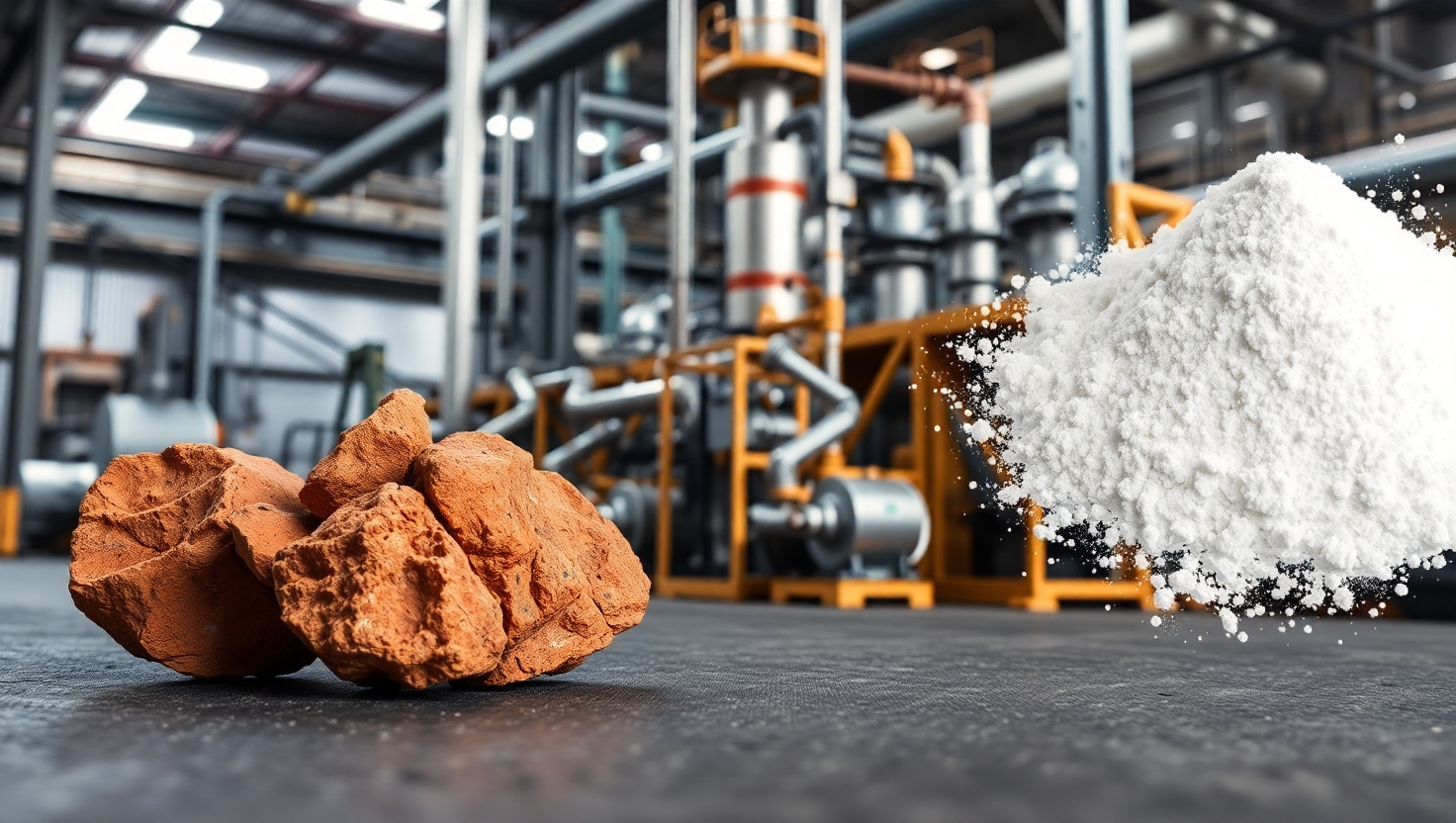What is Alumina? Industry Insights
Published by: ALUTimes | Date: July 10, 2025
Introduction
Alumina, also known as aluminium oxide (Al₂O₃), is a white, crystalline substance that plays a critical role in a wide range of industries. From being the foundational material for producing aluminium metal to acting as a vital ingredient in ceramics, electronics, and even dentistry, alumina is more than just a raw material—it’s a global industrial staple. This guide provides everything you need to know about alumina, including how it’s produced, where it’s used, and why it matters in 2025 and beyond.
What is Alumina?
Alumina is a naturally occurring compound composed of aluminium and oxygen. It can be found in several mineral forms, but the most common is bauxite—the primary source of alumina. It appears as a fine white powder and has several unique properties that make it essential in modern industries.
Key Properties of Alumina
- High Hardness: Alumina ranks 9 on the Mohs hardness scale, just below diamonds.
- Thermal Stability: It can withstand temperatures exceeding 2000°C, making it suitable for high-temperature applications.
- Electrical Insulation: It’s an excellent insulator and used widely in electronic components.
- Chemical Resistance: Alumina is highly resistant to corrosion, acids, and alkalis.
- Abrasive Nature: Its hardness makes it ideal for use in abrasives and cutting tools.
How is Alumina Produced?
The production of alumina primarily involves refining bauxite ore through the Bayer Process:
- Crushing & Grinding: Bauxite is crushed and mixed with sodium hydroxide (NaOH).
- Dissolution: The mixture is heated under pressure, dissolving alumina into a solution.
- Separation: The undissolved residue (called red mud) is filtered out.
- Precipitation: Alumina is precipitated from the solution as a white crystalline hydrate (Al(OH)₃).
- Calcination: The hydrate is heated to remove water, leaving behind pure alumina powder.
Applications of Alumina
Alumina has diverse applications that span multiple industries:
- Aluminium Production: Over 90% of alumina is used to make aluminium via the Hall-Héroult process.
- Electronics: Used as insulators in semiconductors, circuit boards, and spark plugs.
- Ceramics: High-purity alumina is essential in manufacturing refractory ceramics and tiles.
- Abrasives: Used in sandpapers, grinding wheels, and polishing compounds.
- Medical and Dental: Biocompatible alumina is used in dental implants and artificial joints.
- Glass: Improves the clarity and strength of glass, especially in smartphone screens.
Global Alumina Market Trends (2025 Outlook)
The global demand for alumina is steadily growing, driven by the rising consumption of aluminium and the expansion of high-tech applications:
- Asia-Pacific: China and India lead in production and consumption, particularly in the EV, solar, and construction sectors.
- Green Alumina: The shift towards sustainable production using renewable energy is gaining traction.
- High-Purity Alumina (HPA): Demand for HPA is rising in battery separators, LEDs, and semiconductors.
- Supply Chain Diversification: Countries are investing in refining capacity to reduce reliance on Chinese imports.
Major Alumina Producers Worldwide
- Alcoa (USA)
- Rio Tinto (Australia)
- Hindalco Industries (India)
- RUSAL (Russia)
- South32 (Australia)
- China Hongqiao Group
Environmental Concerns and Recycling
The production of alumina involves significant energy use and generates red mud, a hazardous waste. Innovations in red mud recycling and green alumina production are helping reduce the environmental footprint. Additionally, recycled aluminium significantly lowers the demand for fresh alumina, creating a circular economy model.
Conclusion
Alumina is not just a precursor to aluminium—it’s a powerhouse material in its own right. Its unique properties make it indispensable across industries, from electronics to medical implants. As the world transitions to cleaner energy and smarter technology, alumina’s relevance will only continue to grow. Whether you’re a manufacturer, researcher, or curious reader, understanding alumina is key to understanding the future of materials science.
Disclaimer
This article is for informational purposes only. ALUTimes does not offer technical or investment advice. Please consult relevant professionals for specialized information.

